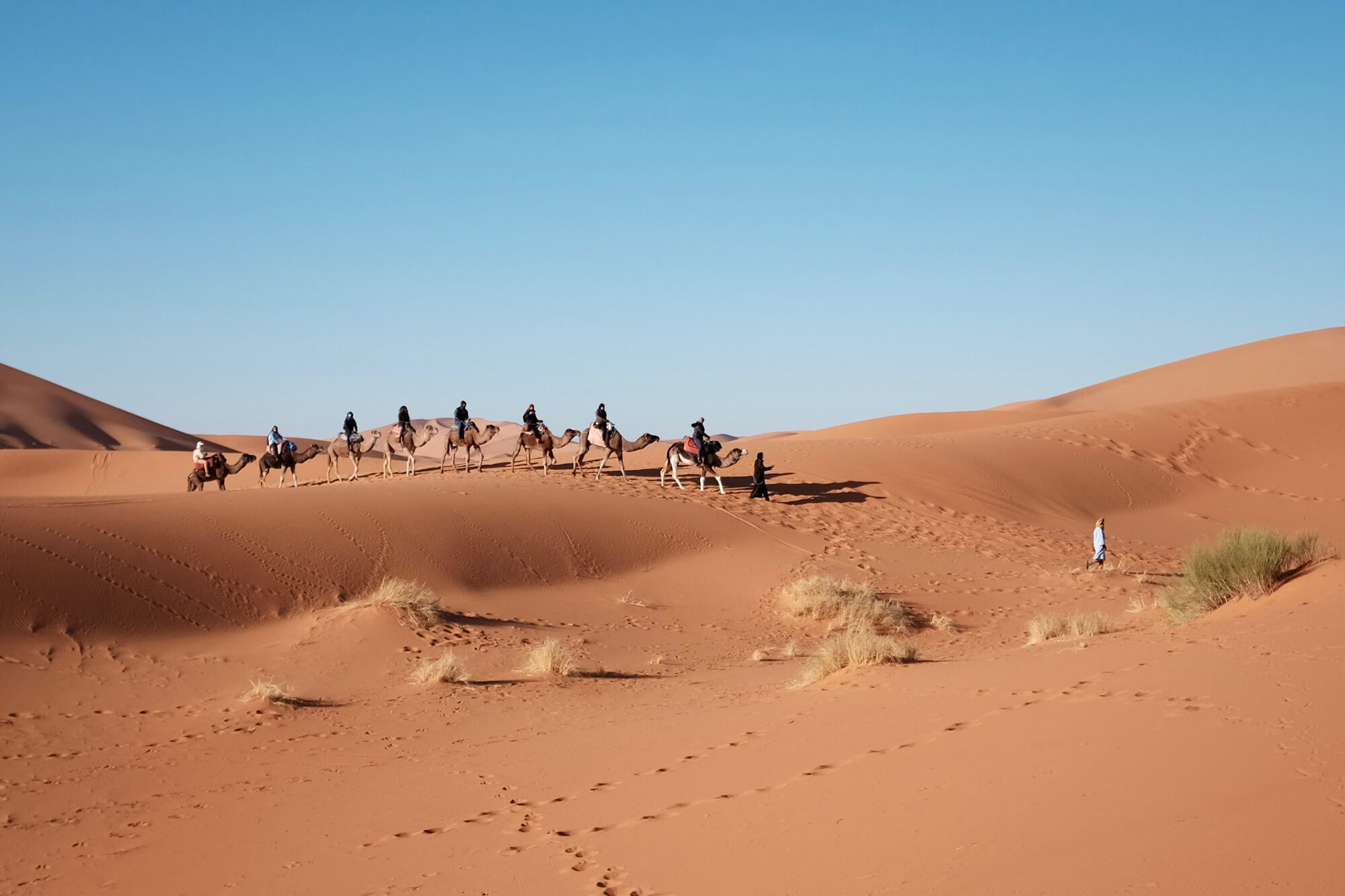The desert in Morocco spans halfway across the country and carries a rich history of the culture of Morocco. Experience an iconic Sahara Desert trip or take a camel tour around the other deserts of Morocco has to offer from the Agafay to the Zagora Desert.
Each is incredibly diverse and magnificent. You will venture across golden sand dunes or stony, lunar landscapes that lead to vibrant, fertile oases. Explore the ruins of ancient kasbahs, hike through canyons and gorges and learn facts about Morocco culture during an overnight stay with an Amazigh or Bedouin family.
Typically, people choose to spend 3 days and 2 nights on a desert safari to get the full mind-body experience. Spending at least one night in the desert is a must and can easily be arranged from a Marrakech Sahara Desert tour. The best recommended times for desert journeys are from November to March when temperatures are pleasant.
Agafay Desert
This desert has a rugged, barren terrain with incredible views of the High Atlas Mountains in contrast to the majestic dunes of the Sahara, but is no less fascinating. The Agafay Desert offers a tranquil and peaceful retreat from Casablanca or Marrakech. For those who desire an authentic desert experience, but have limited travel time, Agafay is an excellent choice.
Located just 40km outside of Marrakech, it takes about one hour to get here by car. You can explore the peaks that ripple and roll across the landscape as you roam through dramatic canyons and end the day with a campfire under the stars.
There is also a man-made lake, Lake Takerkoust, near the edge of the desert where you can swim, rent a canoe or pedal boat to venture out on the water. Hiking and biking trails surround the lake or you can hop on a horse and take in the scenery the old-fashioned way.
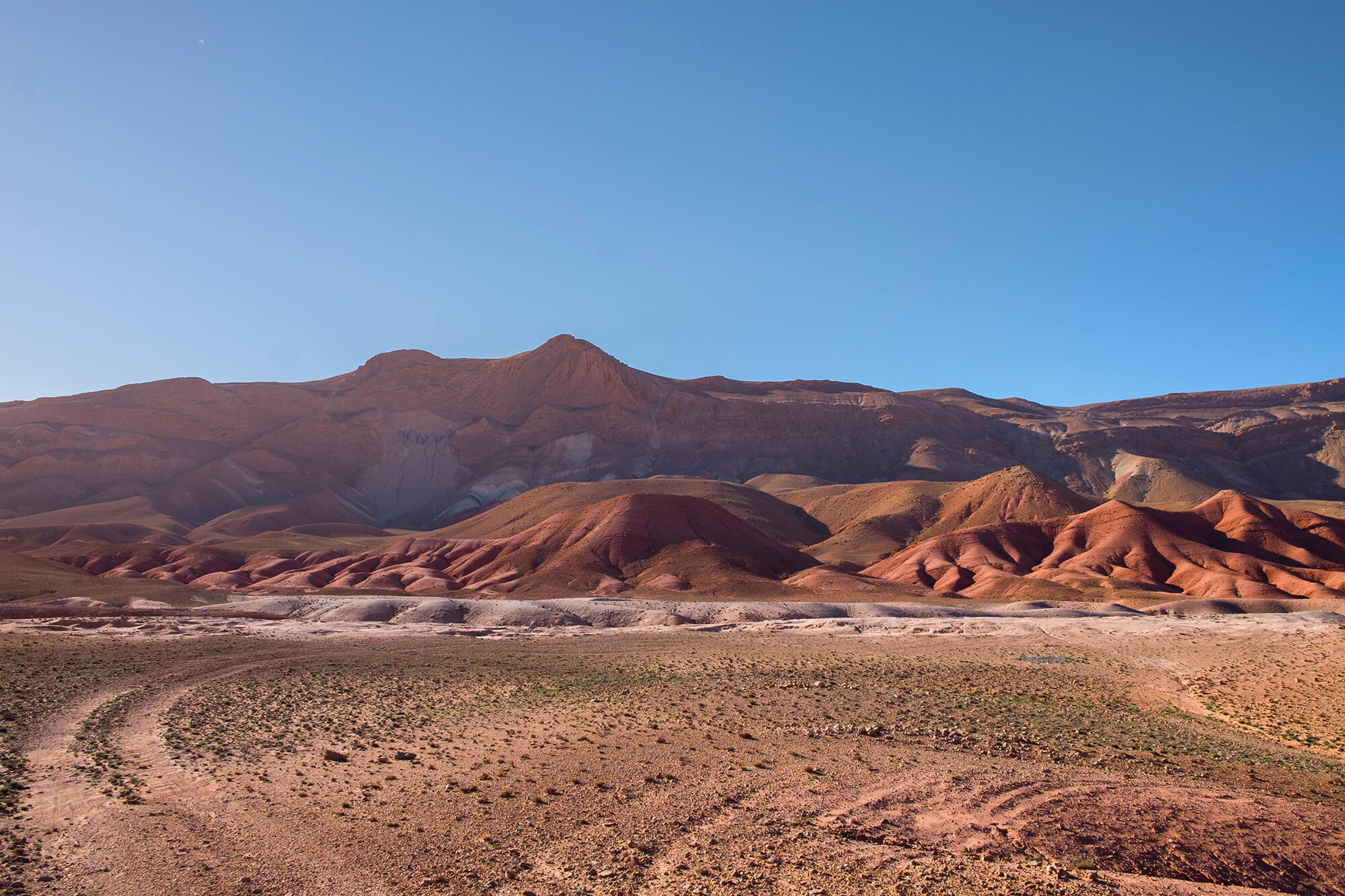
Merzouga Desert
A journey within a journey, traveling to the Merzouga Desert takes about 9-10 hours to drive from Marrakech, but it is absolutely worth it and the perfect opportunity to see the diverse landscape of Morocco.
Located in southeastern Morocco near the Algerian border, the Merzouga Desert is home to the legendary, fire orange dunes of Erg Chebbi. An erg refers to a vast area covered with sand and shifting dunes (dictionary.com) Erg Chebbi has the tallest and most impressive dunes rising up to 150 m high or 2,400 ft. The dunes are constantly shape-shifting being molded by the wind so the forms are dramatic and ethereal.
Merzouga town is just 1 km from the Erg Chebbi dunes so you can literally walk there from your hotel or take a leisurely stroll up the edge of the desert. There is also a seasonal lake near Merzouga town, Lake Dayet Srij, known for its biodiversity and migratory birds most famously flamingos who stop to rest and can usually be seen here between March and April.
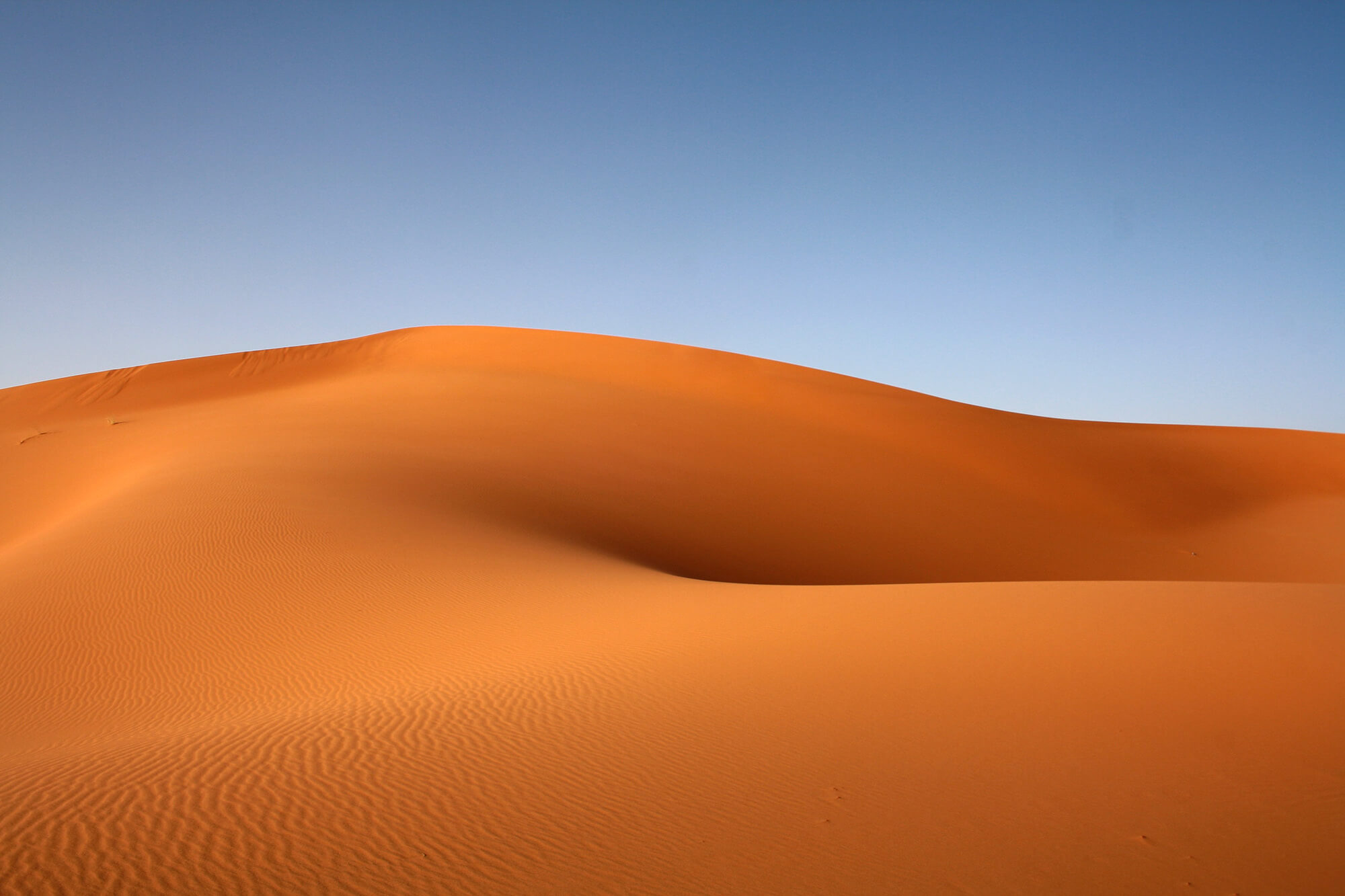
Zagora Desert
Looking for an even more remote desert experience, then head to the Zagora Desert where you’ll likely run into fewer tourists. Some areas of this desert are rocky and the dunes are smaller than Merzouga, but still evoke a dramatic feel. You can trek across the famous, Erg Chigaga, the largest dunes of Morocco both in height and area. Erg Chigaga is more difficult to access so it is less visited and retains its wild nature. You can also roam through the Draa River Valley and date palm oases.
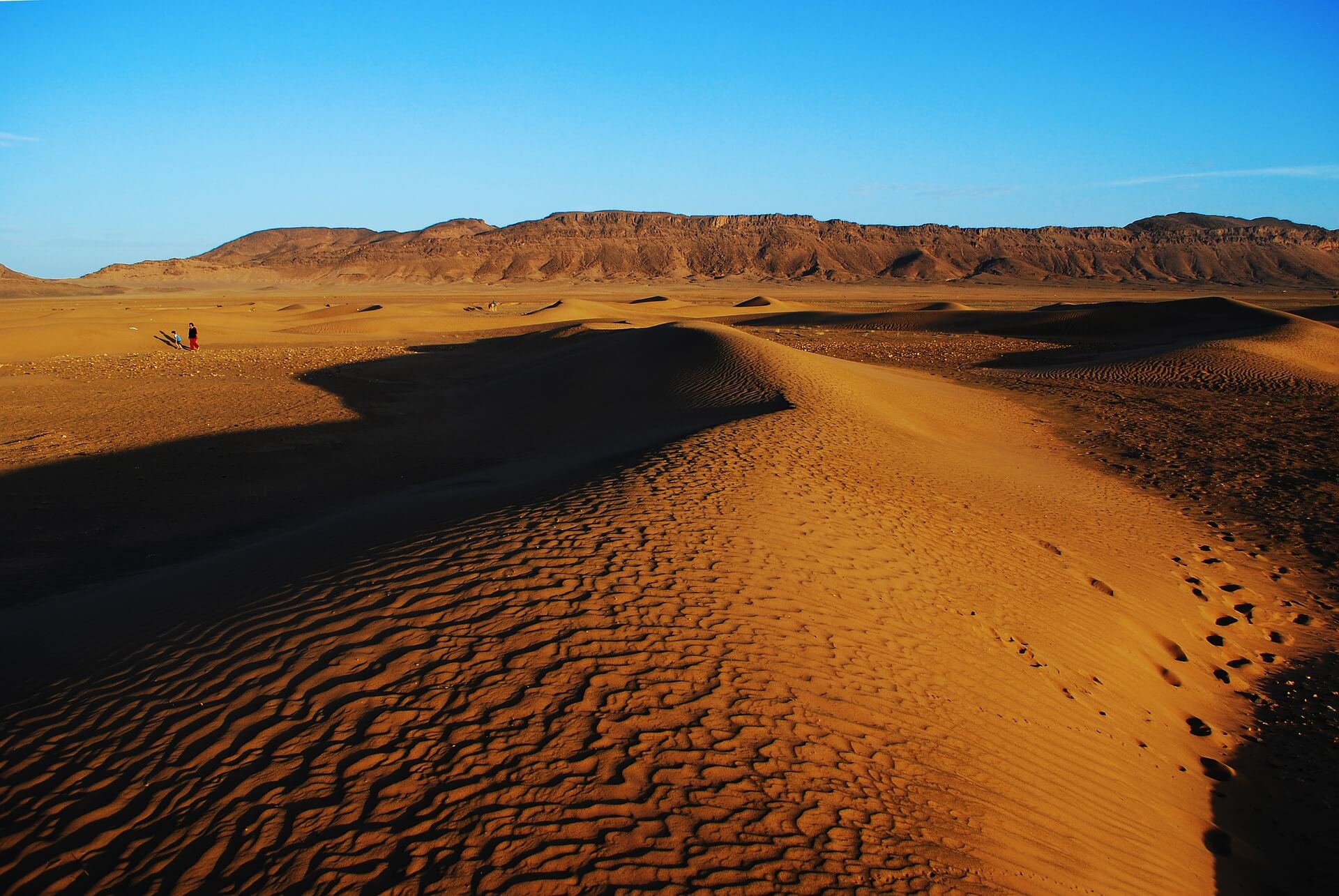
Desert Activities
There are several desert activities you can experience that include camel treks, quad biking adventures, hiking, sandboarding, and sand bathing. Sand bathing or sand therapy is an alternative medicinal treatment recommended for people suffering from rheumatism, arthritis, and back pain. This ancient treatment has been practiced for centuries and involves being buried in the hot desert sand for just under 10 minutes to eliminate toxins and help to heal with the soothing warmth of the sand. Not too keen on riding a camel? You can always tour the dunes comfortably in an air-conditioned 4×4 and see more in less time.
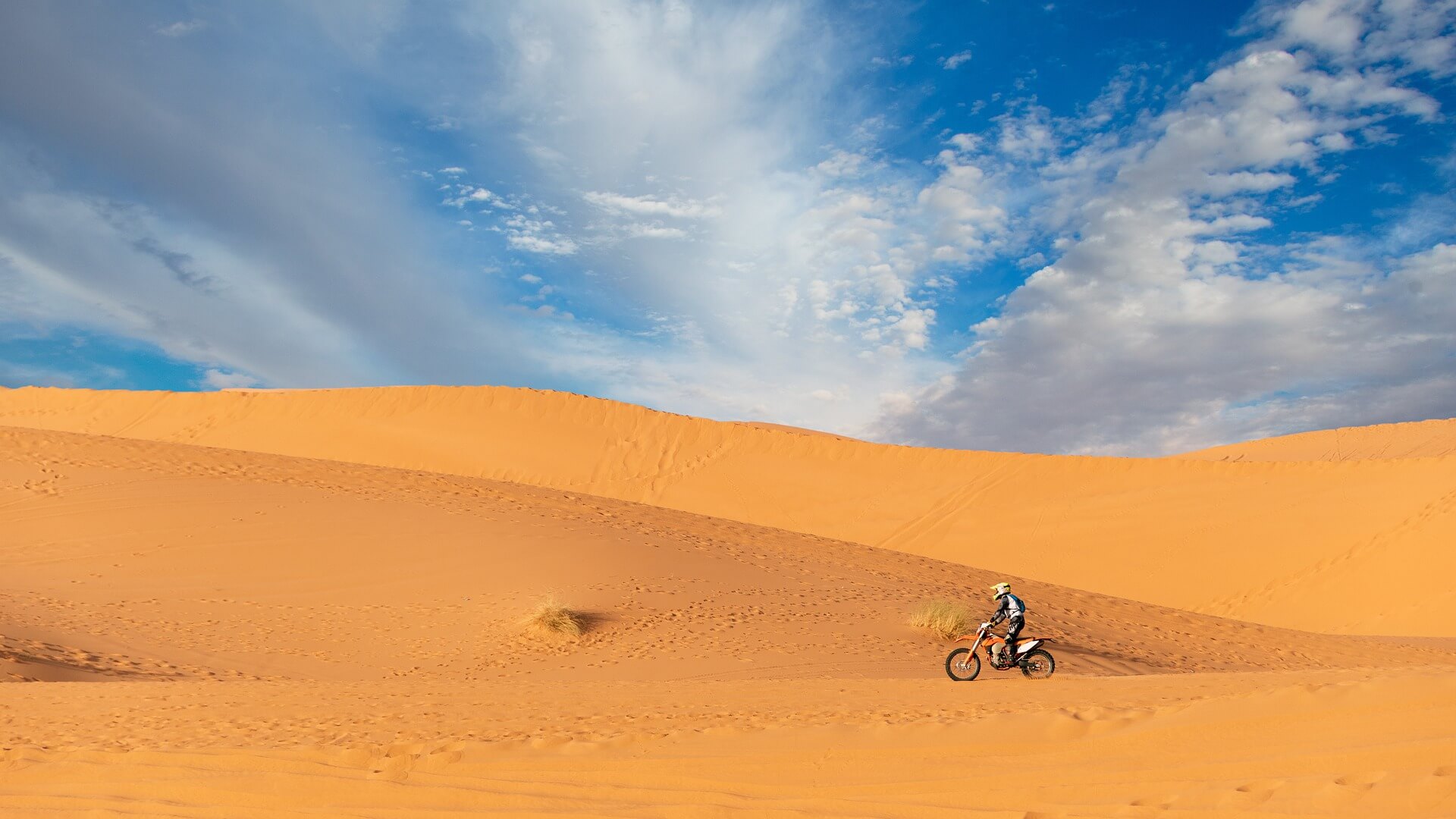
Desert Towns to Visit
Erfoud
Step into this oasis town and you’ll likely feel the magic of what it’s like to live so close to the incredible sand dunes of Erg Chebbi. Known as ‘’the Gateway to the Sahara’’ Erfoud has a rich archaeological and cultural heritage with its abundance of prehistoric fossils and its annual date harvest.
Merzouga
This quaint and charming desert town is made up of sandstone buildings that seem to blend right into the landscape. Legend tells that this was once a lush, tropical jungle that was transformed into a dry and barren landscape as a punishment from God onto the villagers who refused to feed a hungry, poor lady.
Ouarzazate
Morocco’s Hollywood, Ouarzazate’s idyllic desert landscape has been featured in many Hollywood blockbuster films (The Mummy and The Gladiator) and more recently, Game of Thrones. The famous, annual foot race across the Sahara, Marathon des Sables, takes place here and is said to be the toughest foot race in the world.
Rissani
A small yet charming town with a weekly fresh market and laid-back souks, Rissani is an ideal desert getaway. Visit the Moulay Ali Cherif Mausoleum, founder of the Alaouite dynasty. Explore the 8th-century ruins of Sijilmassa with its two remaining decorated gateways and discover several fortified villages around the vicinity.
Taroudant
This magical city is surrounded by ancient stone walls and is located in the Sous Valley in southern Morocco. You can explore these 16th-century ramparts, visit an eclectic art collection of Chilean artist Claudio Bravio at his former residence now the Palais Musee Claudio Bravio, people-watch in Place Al Alaouyine and browse all the beautiful handmade silver jewelry at Bijouterie Essada.
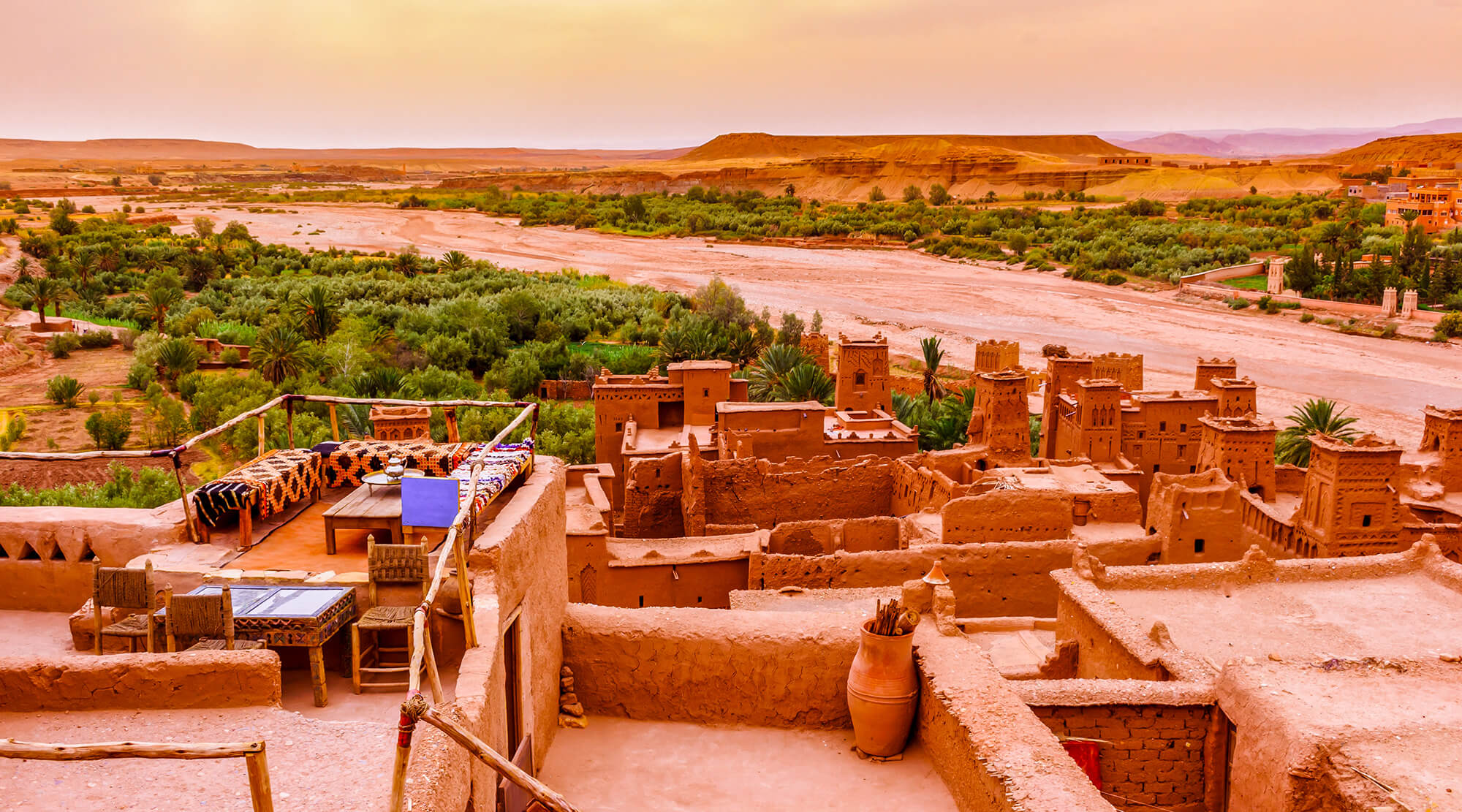
What to Bring when Visiting the Deserts of Morocco
Water is crucial to stay hydrated. Two to three liters should suffice.
Sunglasses to protect your eyes from harmful sun rays.
First Aid Kit, just in case!
Sunscreen is another important item, a SPF 50+ should keep your skin protected. Many people tend to forget just how intense the desert sun is especially over long durations. Make sure to put it on before you board a camel!
A flashlight is always a good idea and comes in handy.
Backpack- a small backpack to carry these items will make it easier for you to transport them on your journey.
Lighter or matches – firepower is a good back up.
Portable Charger for your phone or camera because your battery will likely run low taking all those photos!
Insect Repellant to keep those bloodthirsty beasts away!
A blanket will add an extra layer of warmth if you plan on spending the night in the desert.
Hand Sanitizer to rid those germs goodbye!
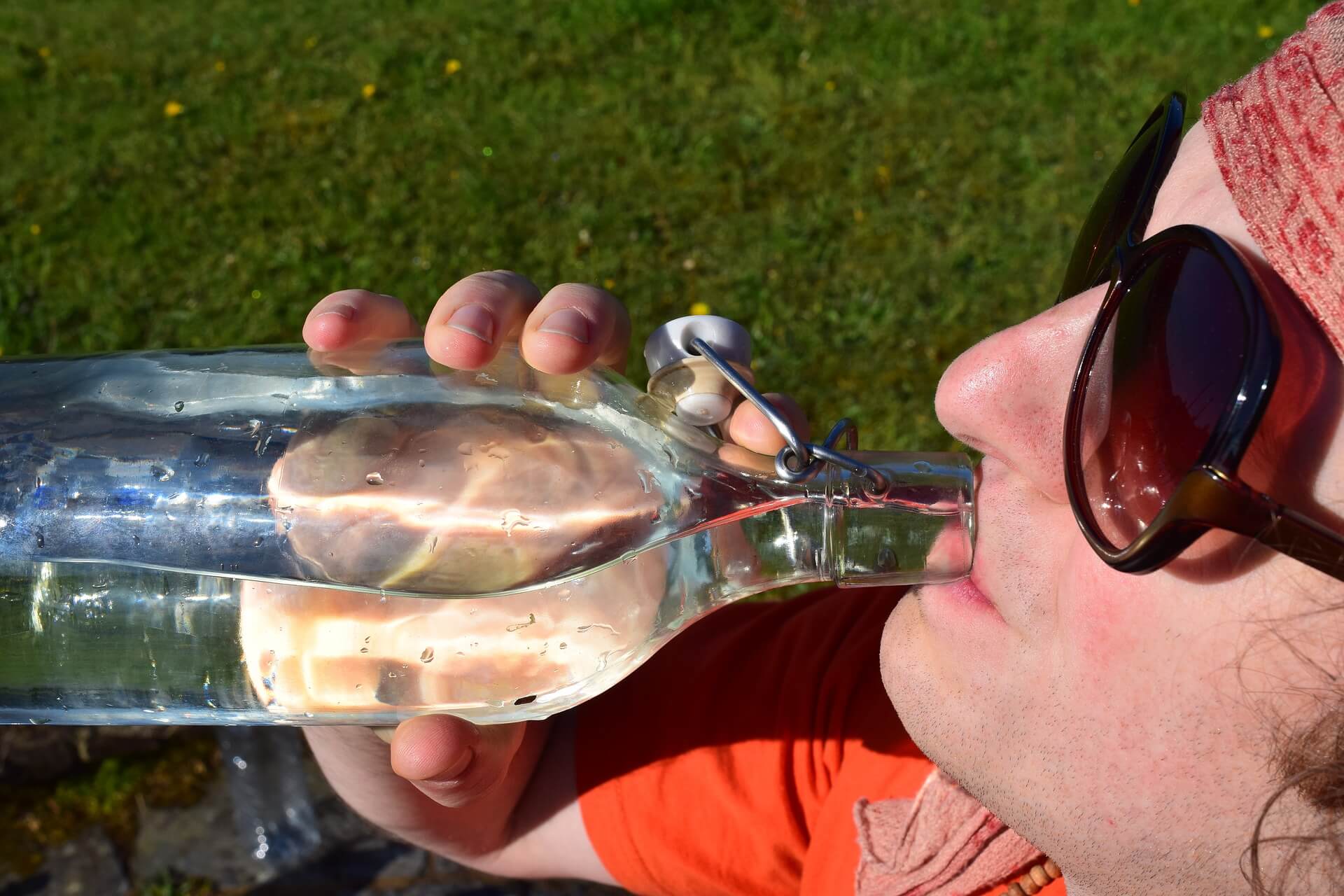
What to Wear in the Desert
During summer, it’s best to wear loose-fitting, comfortable pants as they will be your best friend on that camel ride. Long-sleeved linen shirts while on a trek to protect your skin from the sun. A sombrero hat or wide-rimmed hat will keep your face shaded and your head cool. Breathable shoes or sandals that won’t fall off your feet are also advised.
When traveling during the Winter season, be aware that temperatures can drop pretty low so it’s good to pack warm clothes that can be layered and a warm sweater. It’s always better to be safe than sorry. A warm, windproof jacket and a warm hat are a definite must in case the weather turns or a sand storm arises. No matter what the season, you will want to pack a large scarf to protect your face from the wind, sand, and sun.
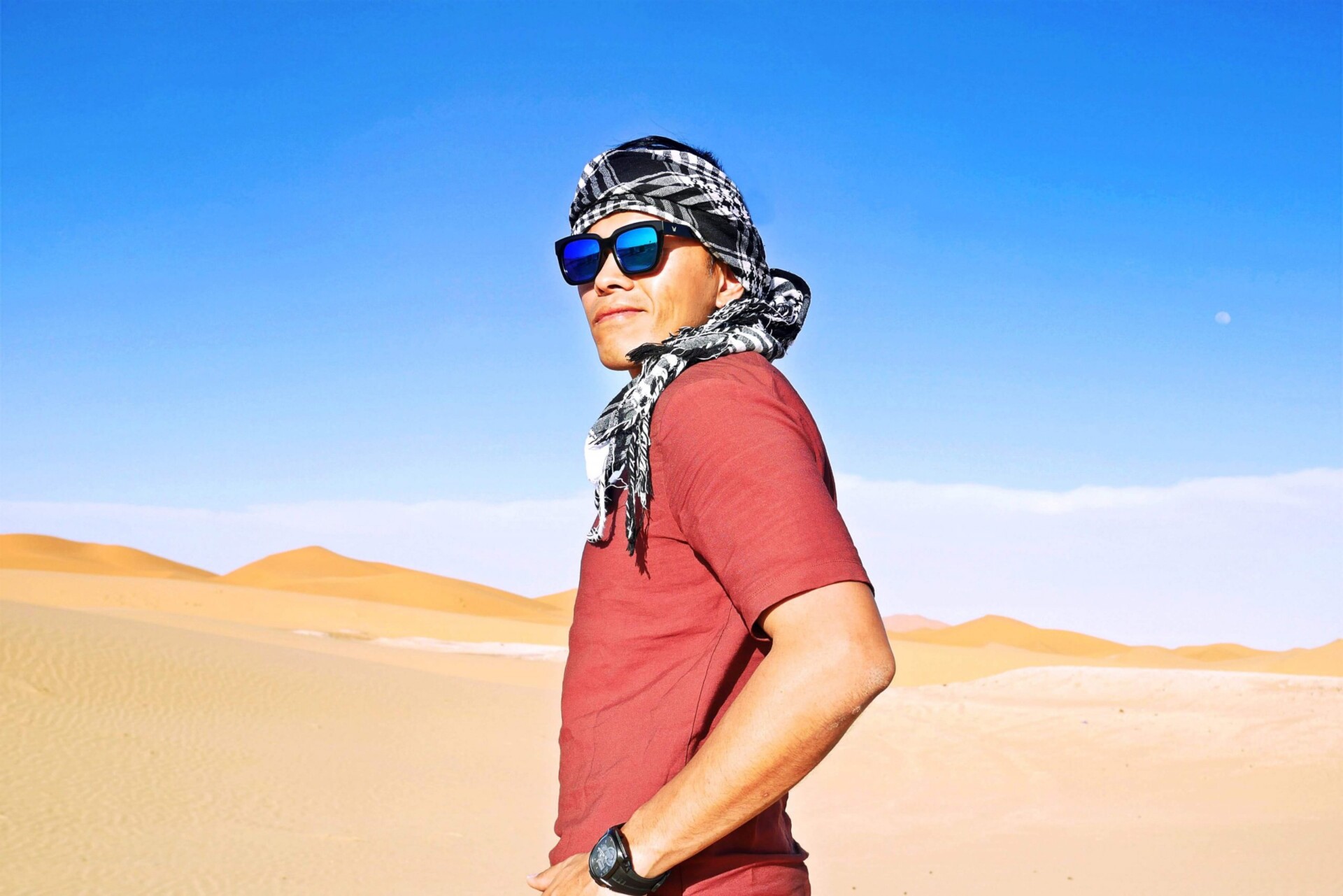
No trip to Morocco is ever complete without a trip to the Desert.
Stillness, silence, serenity.
Mystical and surreal, a journey through the deserts of Morocco will leave you stunned and forever changed.
